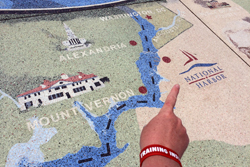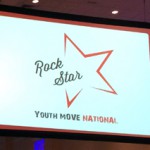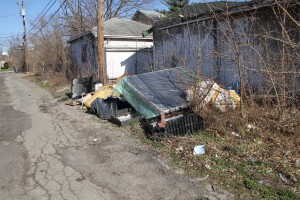 Last week I traveled to National Harbor, Maryland to attend the 2014 Georgetown University Training Institutes on improving services and supports for children, adolescents, and young adults with or at risk for mental health challenges and their families, along with Reclaiming Futures Fellowship Program Manager, Christa Myers.
Last week I traveled to National Harbor, Maryland to attend the 2014 Georgetown University Training Institutes on improving services and supports for children, adolescents, and young adults with or at risk for mental health challenges and their families, along with Reclaiming Futures Fellowship Program Manager, Christa Myers.
This year the conference theme was, “Improving Children’s Mental Health Care in an Era of Change, Challenge and Innovation: The Role of the System of Care Approach” with an estimated attendance of 2,000. Below are my key takeaways.
The Youth Movement Has Arrived
 There was a great youth track at the conference – and more often than not you could hear fellow attendees in the hallways saying that these sessions were better than any others they had attended.
There was a great youth track at the conference – and more often than not you could hear fellow attendees in the hallways saying that these sessions were better than any others they had attended.
 Both Youth M.O.V.E. National and local Youth M.O.V.E. chapters were well represented, along with many other youth organizations from around the country. On Thursday night the 2014 recipients of the Youth MOVE Rockstar Awards were announced. The recipients were:
Both Youth M.O.V.E. National and local Youth M.O.V.E. chapters were well represented, along with many other youth organizations from around the country. On Thursday night the 2014 recipients of the Youth MOVE Rockstar Awards were announced. The recipients were:
- Niketa Currie, Youth M.O.V.E. North Carolina was named the 2014 Tricialouise Gurley-Millard Youth Advocate
- Dr. JoAnne Malloy, Institute On Disabilties was named the 2014 Dr. Gary M. Blau Professional of the Year
- The Kentucky Partnership for Families and Children was named the 2014 Youth Guided Organizational Rockstar
- Bruce Brumfield, Center for Community Alternatives was named the 2014 Marlene Matarese Advocate for Youth was named the 2014
- Youth M.O.V.E. Miami was named the 2014 National Chapter
- Gregory Foster was given the first ever Honorary Rockstar award for his continued dedication to youth and young adults who struggle with poverty and behavioral health needs.
And a special shout out to Youth M.O.V.E. Saginaw for contributing the soundtrack.
The Power of Storytelling
 Storytelling is critical for organizations dealing with complex issues. The Power of Story Telling: Digital Voices in a Digital Age was a special presentation on the first day of the conference. This session showcased first person narrative video stories by youth from Washington state’s Youth N Action.
Storytelling is critical for organizations dealing with complex issues. The Power of Story Telling: Digital Voices in a Digital Age was a special presentation on the first day of the conference. This session showcased first person narrative video stories by youth from Washington state’s Youth N Action.
 ter weather is starting to break. Snow showers and subzero temperatures are replaced with rain showers and flowers. For some neighborhoods in Dayton, Ohio the break in the weather brings light to a major issue. The issue of illegal dumping is highly visible once the piles of snow have melted away. In some instances, neighborhoods have been left with tons of trash and debris. For several blocks certain alleyways can be found with couches, mattress, appliances and construction waste.
ter weather is starting to break. Snow showers and subzero temperatures are replaced with rain showers and flowers. For some neighborhoods in Dayton, Ohio the break in the weather brings light to a major issue. The issue of illegal dumping is highly visible once the piles of snow have melted away. In some instances, neighborhoods have been left with tons of trash and debris. For several blocks certain alleyways can be found with couches, mattress, appliances and construction waste.




 Do you know someone 40 years old (or younger) who is working to improve health and health care for the future? Please nominate that person for a
Do you know someone 40 years old (or younger) who is working to improve health and health care for the future? Please nominate that person for a  Juvenile Justice Reform
Juvenile Justice Reform

 Greg Berman
Greg Berman Young people are gathering on the steps of Chicago Public Schools today, along with parents and teachers, calling for an overhaul of the district school discipline policy. The rally is organized around the release of a new report, Failed Policies, Broken Futures: The True Cost of Zero Tolerance, produced by
Young people are gathering on the steps of Chicago Public Schools today, along with parents and teachers, calling for an overhaul of the district school discipline policy. The rally is organized around the release of a new report, Failed Policies, Broken Futures: The True Cost of Zero Tolerance, produced by 


 Is the Juvenile Justice System "Improving Lives or Devastating Them?"
Is the Juvenile Justice System "Improving Lives or Devastating Them?"